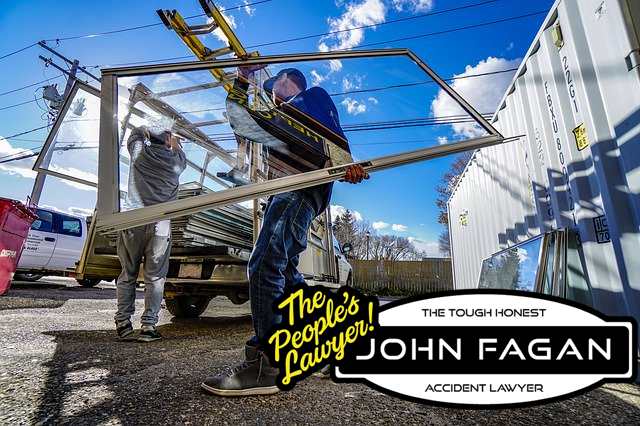There are many job-related injuries workers need to be cognizant of. Learn seven of the most common workplace injuries that may result in a workers’ comp claim.
“I’ve fallen and I can’t get up!” Have you ever heard someone yell out that phrase during work hours? If so, chances are you started workers’ comp paperwork soon after. Serious injuries are fairly common in the workplace. Let’s take a look at the 7 most common workplace injuries and preventative measures you can take.
1. Overexertion – Back pain might not seem like a big deal, but overexertion can cost a business a lot of money. Complaints alone can rack up a $100 billion bill every year. Overexertion can have a big impact on a business, and it can be even worse for employees. Oftentimes, workers experience long term effects that can possibly debilitate their work capabilities. Prevention: Adjust assignments so that employees aren’t doing the same repetitive task day in and day out. Give them several breaks and if you have items over 50 pounds, invest in machines that will assist in some of the heavy lifting.
2. Slips, Trips, and Falls – A third of all workplace injuries happen because someone slipped, tripped, or fell. Slipping on a wet surface or tripping over clutter can cause a variety of injuries. Prevention: Is there unnecessary clutter in the workplace? Are there any obstructed views or poor lighting? Someone can even trip if there is a bottom storage drawer left open.The key to preventing these accidents is good housekeeping. Keep work floors clean and free of wet spills. Post signs to remind employees to shut drawers and wear proper footwear.Encourage everyone at work to report hazardous areas (spills, obstruction, damage).
3. Repetitive Strain Injury – Repetitive strain injury (RSI) is becoming increasingly common. This is similar to overexertion in the sense that it’s caused by repetitive motion. However, this usually affects the upper body (forearm, elbow, wrist, hands, shoulder, neck). Prevention: As with overexertion, you’ll want to give your employees several breaks. Encourage them to stretch their muscles, especially in their arms and back. Provide your employees with comfortable seating with back support.
4. Transportation Accidents – Where there are wheels, there is potential for an accident. There is an obvious concern for workers whose jobs are on the road. That doesn’t mean you can’t have a vehicle-related accident in the workplace. Those who operate workplace equipment also have the potential to injure or be injured on the job. Prevention: To prevent these injuries, you need to take a look at some data. Start by reviewing past injuries. Who was at risk? Where did the accidents take place? When do they most typically happen? Knowing this information will help you develop a blueprint for safety measures. Focus on vehicle and pedestrian routes. Make sure you have signage to alert everyone the direction to go, what the speed limit is, and of any obstructions.
5. Moving Machinery – Any machinery has the potential to harm an employee. If that machinery isn’t properly guarded, that safety risk increases significantly. Exposed body parts can get caught and crushed or severed. Flying objects from the machinery can cause any number of damages as well. These injuries are often horrifying and disastrous. Prevention: There is one big rule to follow with machinery. Can it cause an injury? If so, put in a safeguard. This goes for every machine part, function, and process. Make sure every employee goes through proper training. Also, provide them with protective clothing.
6. Fire and Explosions – Fire and explosions account for about 3% of workplace injuries and have a high casualty rate. They happen when there is poor pipe fitting, faulty gas lines, or open flames. Prevention: The best way to prevent fires and explosions in the workplace is to follow OSHA’s hazard communication standards. There should be material safety data sheets on any hazardous materials or chemicals. Employees should also wear protective equipment.
7. Fights “Fight! Fight! Fight!” – You would think this chant would be left behind in high school. The truth is, workplace tension can bubble up and boil over to the point of physical fights on the job. Prevention: You might not be able to ensure every employee roots for the same football team in a big event. You can, however, prevent a certain amount of workplace tension. Sponsor events that encourage employee interaction. They help workers develop relationships with one another in laid-back settings. Encourage solid communication practices to tackle problems instead of one another.If all else fails, develop a no-nonsense policy. If employees can’t keep their hands to themselves, they don’t need to work for you.
Stay Safe – It doesn’t matter if your business is on a farm, in a hospital, at a daycare, or a cubicle filled office. Injuries happen. To keep your employees protected, take protective measures against common workplace injuries. Reading this post a bit too late? Then there’s a good chance you need representation on an injury claim.
Contact us today to learn more about how we can help. You can speak with us for free.
Call 904 LAW-1212 anytime, day or night.






